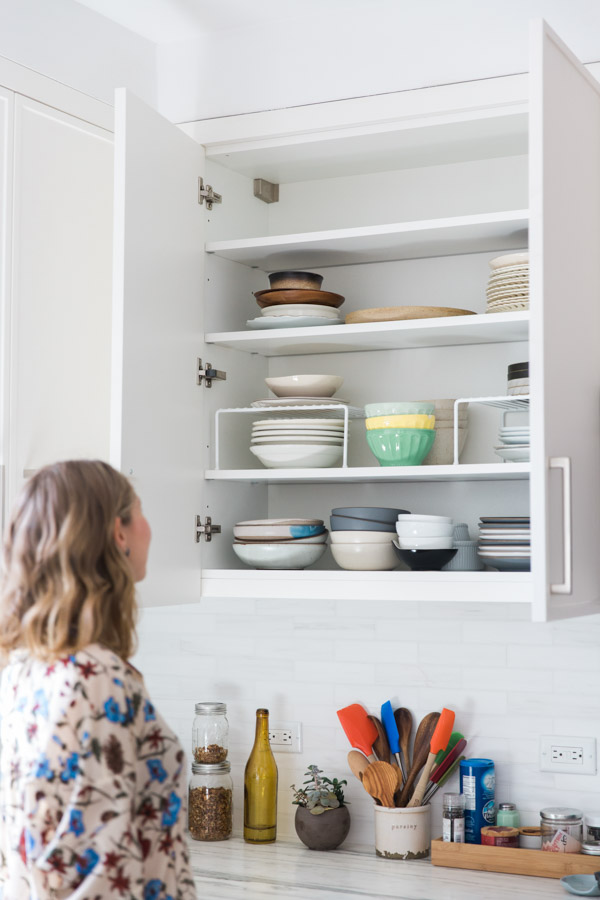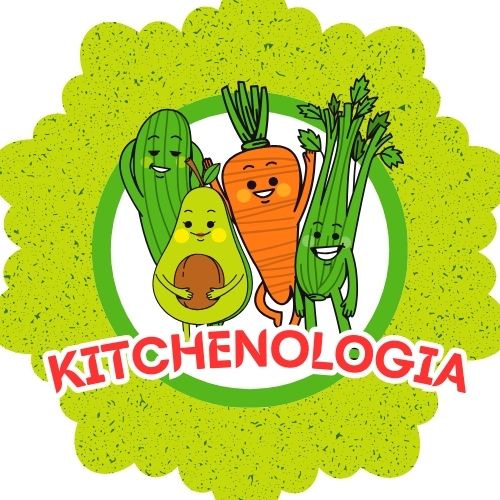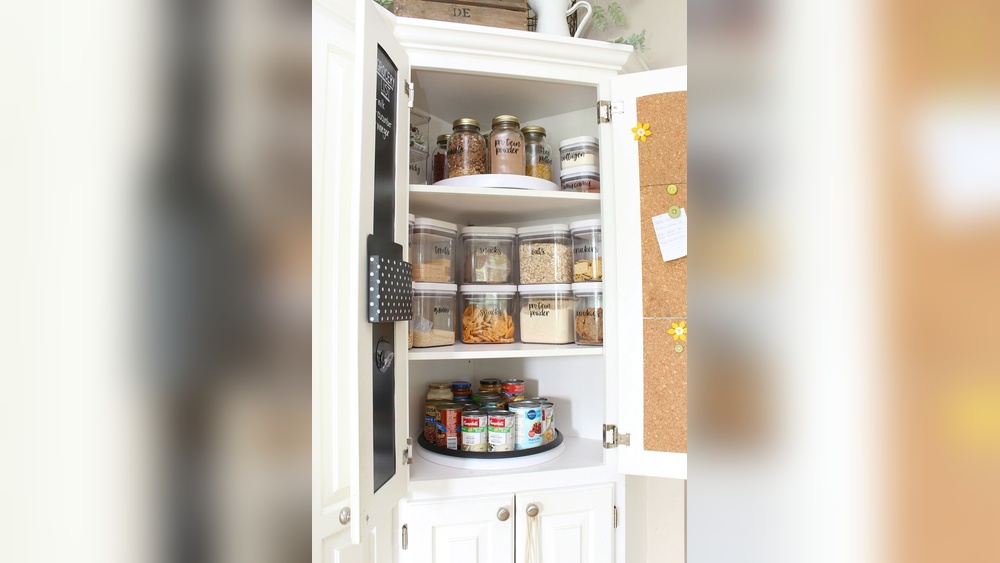Are your kitchen cabinets a jumble of pots, pans, and random gadgets? Imagine opening a cabinet and instantly finding exactly what you need—no digging, no frustration.
How you arrange your kitchen cabinets can transform your cooking space from chaotic to calm, making meal prep faster and more enjoyable. You’ll discover simple, practical steps to organize your cabinets like a pro. Whether you’re working with a small kitchen or a spacious one, these tips will help you create zones, maximize space, and keep everything within easy reach.
Ready to turn your kitchen into an organized haven? Let’s dive in!
Create Kitchen Zones
The cooking zone should be near the stove. Store pots, pans, and cooking tools here for easy reach. Keep everything you need to cook close by.
The cleaning zone works best near the sink or dishwasher. Place plates, bowls, and glasses in cabinets closest to the dishwasher. This makes unloading quick and easy.
Set the food prep area near a countertop. Store cutting boards, knives, and food wrap here. Group items used for preparing food together for faster work.

Organize By Frequency
Daily use items should be stored in the most accessible cabinets. Place plates, glasses, and cups near the dishwasher for quick unloading. Keep pots and pans close to the stove to save time while cooking. Store cooking utensils in a drawer or container near the cooking area. These habits make kitchen tasks faster and easier.
Items used less often can be stored in higher or lower cabinets. This includes large pots, special baking tools, or seasonal dishware. Store these away but still within reach when needed. Group similar items together to avoid searching.
Sort By Item Type
Place heavy items like pots and pans in the lower cabinets. This keeps them safe and easy to lift. Light items such as cups and plates go in the upper cabinets. It makes reaching them quick and simple.
Store appliances like toasters and blenders in cabinets near the counter. This saves space and keeps them handy. Keep rarely used appliances in higher or deeper cabinets to avoid clutter.
| Item Type | Best Storage Location |
|---|---|
| Heavy Items (pots, pans) | Lower cabinets |
| Light Items (plates, glasses) | Upper cabinets |
| Daily Use Appliances | Near counter |
| Rarely Used Appliances | Higher or deeper cabinets |
Maximize Cabinet Space
Shelf risers help create extra levels inside cabinets. They make stacking plates and bowls easier and save space. Vertical dividers keep baking sheets, trays, and cutting boards upright. This prevents clutter and makes items easier to find.
Using cabinet doors is a smart way to add storage. Hooks or small racks can hold measuring spoons, pot lids, or cleaning supplies. This uses space that usually goes empty.
Declutter Before Organizing
Start by removing all items from your kitchen cabinets. Sort everything into three groups: keep, donate, and discard. This helps clear out things you no longer need or use. A clutter-free space makes organizing easier and faster.
Check expiration dates on food and throw away anything expired. Group similar items together, like plates with plates and pots with pots. This step prepares your kitchen for better arrangement and saves space.
Make sure each cabinet holds only items that belong there. Avoid mixing kitchen tools with cleaning supplies. A neat, clean cabinet feels good and helps you find things quickly.
Group And Stack Items
Group similar supplies like plates, cups, and bowls together. This makes finding items easier. Keep all baking ingredients in one spot. Store canned goods and spices in another area.
Stack items carefully to save space and avoid damage. Place heavier items at the bottom and lighter ones on top. Use shelf risers or organizers to create extra layers.
| Stacking Technique | Tip |
|---|---|
| Vertical Stacking | Stack plates and pans vertically for easy access. |
| Use Risers | Add shelf risers to double the storage space. |
| Clear Containers | Store dry goods in clear containers to see contents. |
Use Clear Containers
Using clear containers helps you see contents quickly. This saves time when searching for items. Clear containers keep your kitchen neat and tidy. They also protect food from dust and pests.
Labels on containers make finding things easier. Use simple words or pictures for quick reading. Label each container’s content clearly. This helps all family members find things fast.
| Container Type | Best For | Benefits |
|---|---|---|
| Small jars | Spices, seeds | Easy to stack and see inside |
| Plastic bins | Snacks, packets | Keeps small items in one place |
| Drawer organizers | Utensils, small tools | Prevents clutter and mixes |

:strip_icc()/kitchen-pantry-snacks-c2bb5c24-7b13dec53fc446c8ad1ae36763639f30.jpg)
Frequently Asked Questions
How Do You Decide Where To Put Things In Kitchen Cabinets?
Organize kitchen cabinets by task zones: store pots near the stove, plates near the dishwasher, and prep tools by the counter. Place daily items within easy reach and heavier or rare-use items lower or higher. Group similar items together for easy access and efficient workflow.
What Are The 9 Steps In Organizing A Kitchen Cabinet?
The 9 steps to organize kitchen cabinets: 1. Empty cabinets. 2. Clean shelves. 3. Sort items by type. 4. Create zones for tasks. 5. Store daily items within reach. 6. Place heavy items low. 7. Use vertical organizers. 8. Utilize cabinet doors.
9. Label for easy access.
What Kitchen Cabinet Color Is Outdated?
Outdated kitchen cabinet colors include avocado green, mustard yellow, and dark wood tones from the 1970s and 1980s. Bright, neon shades also feel dated. Neutral tones like beige or outdated pastel hues can appear old-fashioned. Modern kitchens favor whites, grays, and muted blues for timeless appeal.
How To Set Kitchen Cabinets For Beginners?
Start by measuring your kitchen space accurately. Plan cabinet zones by task: cooking, cleaning, and food prep. Install lower cabinets first, then upper ones. Store frequently used items at eye level. Use organizers and maximize vertical space for efficiency and easy access.
Conclusion
Arranging kitchen cabinets well makes cooking easier and faster. Group items by how you use them every day. Keep heavy pots in lower cabinets for safety and comfort. Store plates and glasses near the dishwasher for quick unloading. Use higher shelves for things you rarely need.
Organizing your kitchen this way saves time and reduces clutter. A neat kitchen helps you enjoy cooking more. Start small, and adjust as you learn what works best. Your kitchen can be both beautiful and practical.

Yes, working as , Food Blogger and Product Reviewer for last 6 years. Here you will get amazing deals for Smart kitchen products. I am your best source for the latest update in cooking trends. I provide insightful articles, reviews, and analysis on cutting-edge kitchen gadget. My mission is to empower readers with the knowledge they need to stay ahead in a rapidly evolving coking world. Join me as we explore the future of food technology and how it shapes our lives today and tomorrow.





